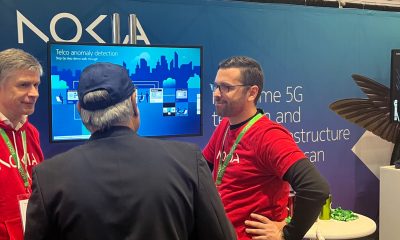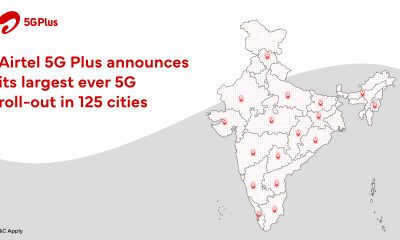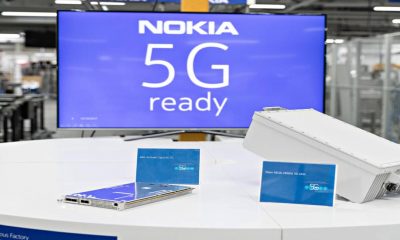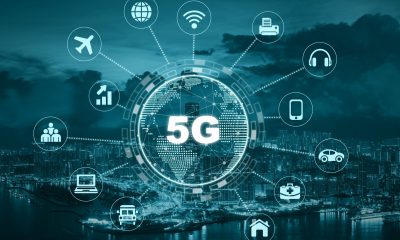5g
MWC 18: Huawei launches full range of 5G end-to-end product solutions

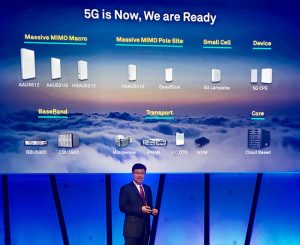 NEW DELHI: At World Mobile World Congress, 2018 (MWC 18) held in Barcelona, Spain, Yang Chaobin, President of Huawei 5G Product Line,has unveiled a full range of end-to-end (E2E) 3GPP-compliant 5G product solutions.
NEW DELHI: At World Mobile World Congress, 2018 (MWC 18) held in Barcelona, Spain, Yang Chaobin, President of Huawei 5G Product Line,has unveiled a full range of end-to-end (E2E) 3GPP-compliant 5G product solutions.
This release covers the core network, the bearer network, base station, and terminals. Huawei’s 5G product solutions are entirely based on 3GPP standards, with full range, full scenario, and all-cloud being the defining characteristics. The featured products are also the only available options within the industry to provide 5G E2E capabilities.
5G Base Station: Various forms to suit the deployment requirements in all scenarios and offer ubiquitous xGbps user experience
The first wave of 5G deployment will take place in buildings and densely populated urban areas. Diverse site forms are therefore required to accommodate the needs of complex deployment scenarios, offering continuous coverage and fulfill capacity requirements of indoor and outdoor hotspots. Huawei’s newly released full range of 5G product solutions support millimeter wave (mmWave), C-band, and all Sub-3 GHz frequency bands. These products also cover all site forms including tower sites, pole sites, and small cells.
Huawei launched the C-band 64T64R and 32T32R Massive MIMO AAUs to deliver ubiquitous Gbps experience. These AAUs support 200 MHz large bandwidth and 3D beamforming to cover buildings, offer uniform coverage, and meet the demands of various other scenarios. Coverage can be flexibly adjusted to optimize the experience for users at the near points and far points, and generate a 20 or 30 times increase in network capacity. mmWave products are suited to supporting 1 GHz bandwidth. The equivalent isotropically radiated power (EIRP) of Antenna ports reaches 65 dBm, ranking first within the industry.
Huawei wireless products boast an integrated, compact, and lightweight design. These features greatly relax the requirements on the antenna installation platform while reducing engineering complexity. All products support diverse scenarios in centralized radio access network (C-RAN)
and distributed radio access network (D-RAN) deployment mode. The optical interface speed is less than 25 Gbps, which is ideal for large-scale 5G deployment.
In addition, the newly released compact 5G Massive MIMO products working in the C-band and mmWave allow for deployment on street lamp poles to fill coverage holes and boost hotspot capacity. The 5G LampSite is backwards-compatible with 4G. Existing CAT6A network cables or fiber optic cables can be used to achieve indoor 4G and 5G co-deployment with zero cable adjustment or site addition.
In the 5G era, wireless sites will be deployed in hybrid D-RAN and C-RAN networking scenarios. Huawei launched BBU5900 and CBU5900 to suit distributed and centralized sites, respectively. BBU5900 is the most highly integrated site solution currently available in the industry. It supports all RATs (2G, 3G, 4G, and 5G) and all frequency bands, and offers 50 Gbps backhaul capability to meet 5G services’ long-term development needs. CBU5900 features the centralized deployment of a large number of baseband units to support the C-RAN architecture. Using CBU5900 help to simplify remote sites, reduces the demands for air-conditioned equipment rooms, and contributes to quick satellite clock synchronization across the entire network. This approach also reduces the number of site visits during maintenance and installation, and considerably lowers future site maintenance and expansion costs. In addition, it will boost performance of the entire network via large-scale close coordination.
5G Bearer Networks: Diverse active and passive solutions using 5G microwave and IPRAN to fully meet 5G networks’ ultra-large capacity requirements
5G networks must feature 10 GE transmission capability to the site and 50 GE/100 GE transmission capability from fiber optic cables to access rings, fulfilling the ultra-large capacity requirements of multiple 5G eMBB services. In a C-RAN scenario, the transmission speed between the centralized equipment room and the site must reach 100 Gbps. Such requirements pose enormous challenges to operators’ mobile bearer networks. The current release includes a range of Huawei 5G bearer product combinations that suit various scenarios, use different media, and take many distinct forms. In backhaul scenarios, 5G microwave series products are able to offer 10 Gbps high data rate and 25 µs low latency when traditional microwave frequency bands are used. 50 GE/100 GE adaptive slicing routers support smooth evolution from 10 GE to 50 GE and 100 GE. This allows operators to implement on-demand deployment. The
active FO OTN fronthaul solution supports up to 15 channels of service access, hitless switching, and integrated access for multiple services. The Centralized WDM fronthaul solution uses innovative colorless optical modules to simplify site delivery and operation and maintenance (O&M). Huawei X-Haul 5G bearer solution supports multiple technologies, such as IP, OTN, and microwave. The aim is to help operators resolve bearer network issues in large-scale 5G deployment.
5G Core Networks: Enabling all-industry digitalization through all-cloud architecture, on-demand deployment, and smooth evolution
Based on the all-cloud architecture, Huawei’s 5G core network solution uses microservice-centric architecture (MCA) to simultaneously support 2G, 3G, 4G, and 5G and realize a smooth evolution from non-standalone (NSA) to standalone (SA). Meanwhile, unlike the traditional network architecture, Huawei’s 5G all-cloud core network uses a distributed architecture based on control plane and user plane separation (CUPS) to help operators deploy the control plane at the central DC and flexibly deploy the user plane according to the service scenarios. For example, for eMBB services such as augmented reality (AR)/virtual reality (VR) and HD IPTV over WTTx, the user plane can be deployed at the network edge to minimize the roundabout traffic on the backbone network, achieve ultra-low latency, and eradicate congestion. The all-cloud 5G core network is also the basis of network slicing. As the new business model of 5G era, network slice will help operators to provide various services via a single network. This will enable the business transformation from the mass market to the vertical industry market, while supporting the digitalization of the entire industry.
5G Terminal: World’s only commercial product with small size and low consumption to provide fiber-like access experience of wireless home broadband
Huawei also released a range of 5G terminals at MWC 2018. Huawei’s 5G customer premise equipment (CPE) is developed based on the 3GPP standards and chipset architecture. It is compact in size, low in power consumption, and highly portable. As the smallest 5G commercial
terminal in the world, it supports C-band and mmWave. In Seoul and Canada, there have been the world’s first wave of 5G subscriber who use Huawei’s commercial 5G terminals. Based on 3.5 GHz and mmWave, users can enjoy a fiber-like experience of wireless home broadband services with the rate exceeding 2 Gbps. In addition, Huawei will launch 5G smart phones in 2019.
2018 will be remembered as the first year that marks the beginning of the 5G era. Using a full range of leading and mature 5G E2E full-scenario product solutions, Huawei has realized the continuous deployment of 5G sites in more than 10 countries, such as China, Korea, Canada, Germany, UK, and Italy. In typical densely-populated urban areas, these product solutions have provided ubiquitous Gbps-level access rate, hundreds of Mbps of indoor access experience, and over 20 Gbps cell capacity.
The countdown has begun for large-scale 5G commercial launch worldwide. Huawei is making the most comprehensive preparations.
5g
MediaTek Catch-up with Tech: Infinix Zero 30 5G with Dimensity 8020 launched

NEW DELHI: Chipset maker MediaTek, which claims to power more than two billion connected devices every year, hosted ‘Catch-up with Tech’ in collaboration with handset brand Infinix on August 28 to share insightful and engaging conversations about the new-age smartphones and innovative technologies powering everyday lives.
The meet-up threw the spotlight on the MediaTek Dimensity Auto, Satellite solutions and Generative AI along with an extensive showcase of newly-launched Infinix Zero 30 5G powered by MediaTek Dimensity 8020, Infinix GT 10 Pro powered by MediaTek Dimensity 8050, and Infinix QLED TV powered by MediaTek.
In terms of specs, the Infinix Zero 30 5G is tailored for young storytellers and creators, featuring the first-ever smartphone to deliver 4K 60fps video recording from its 108 MP OIS rear camera and ultra-high resolution 50MP front camera. The Zero 30 series powered by MediaTek Dimensity 8020 is said to be a game changer for the front camera vlogging experience along with being the slimmest curved AMOLED smartphone in the segment with glass and a vegan leather back panel. It also claims to be one of the most premium-looking devices in the segment.
The event witnessed a panel discussion moderated by Anuj Sidharth, Deputy Director Marketing & Corporate Communications, MediaTek and included expert panelists from Infinix, MediaTek and two renowned professional photographers.
“With the fifth edition of Catch-up with Tech, we aim to bring consumers closer to the technology and enable them to make informed buying decisions based on their diverse needs. In collaboration with Infinix, this meet-up is in-line with MediaTek’s vision of technology democratization and making innovative technology accessible to everyone,” said Anku Jain, Managing Director, MediaTek India. “The MediaTek Dimensity 8020 in Infinix Zero 30 5G brings faster displays, brilliant cameras and ultra-fast performance. Further, MediaTek Imagiq technologies enrich the capture experience by combining dedicated AI, imaging processors and accelerators to provide incredible results,” he added.
Anish Kapoor, CEO, Infinix Mobile India, said, “Featuring India’s first 50MP 4K 60 fps video recording, Infinix Zero 30 5G is primed to redefine smartphone imaging capabilities, setting a new standard for the creators and vlogging enthusiasts. Our collaboration with MediaTek has played a pivotal role in shaping our exceptional smartphone portfolio, and the Zero 30 5G stands as evidence of our unwavering commitment to innovation and delivering unmatched experiences to our users. The display and design of the device represent a leap forward in smartphone technology. As Infinix Zero 30 5G hits the shelves, we are positive that our customers will find this new offering as exhilarating as we do, further empowering creators to capture their story like never before.”
Radhakrishnan Chakyat, a photography evangelist, founder and host of Pixel Viilage, said, “Infinix Zero 30 5G smartphone powered by MediaTek Dimensity 8020 chipset has amazing hardware features, an excellent camera, dual-view video mode and is primed for optimal content creation and saves a tremendous amount of editing time.”
Aarzoo Khurana, a wildlife photographer, said, “Over the last few days, I clicked various pictures and recorded a few videos with the newly-launched Infinix Zero 30 5G powered by MediaTek Dimensity 8020, and the experience has been truly inspiring. Infinix’s smartphone’s OIS feature helps content creators click shake-free pictures and the front camera, which is extremely sharp and detailed, enables content creators to click countless selfies.”
5g
Nokia launches Nokia MEA Mobile Broadband Index confirming 5G drives digital transformation
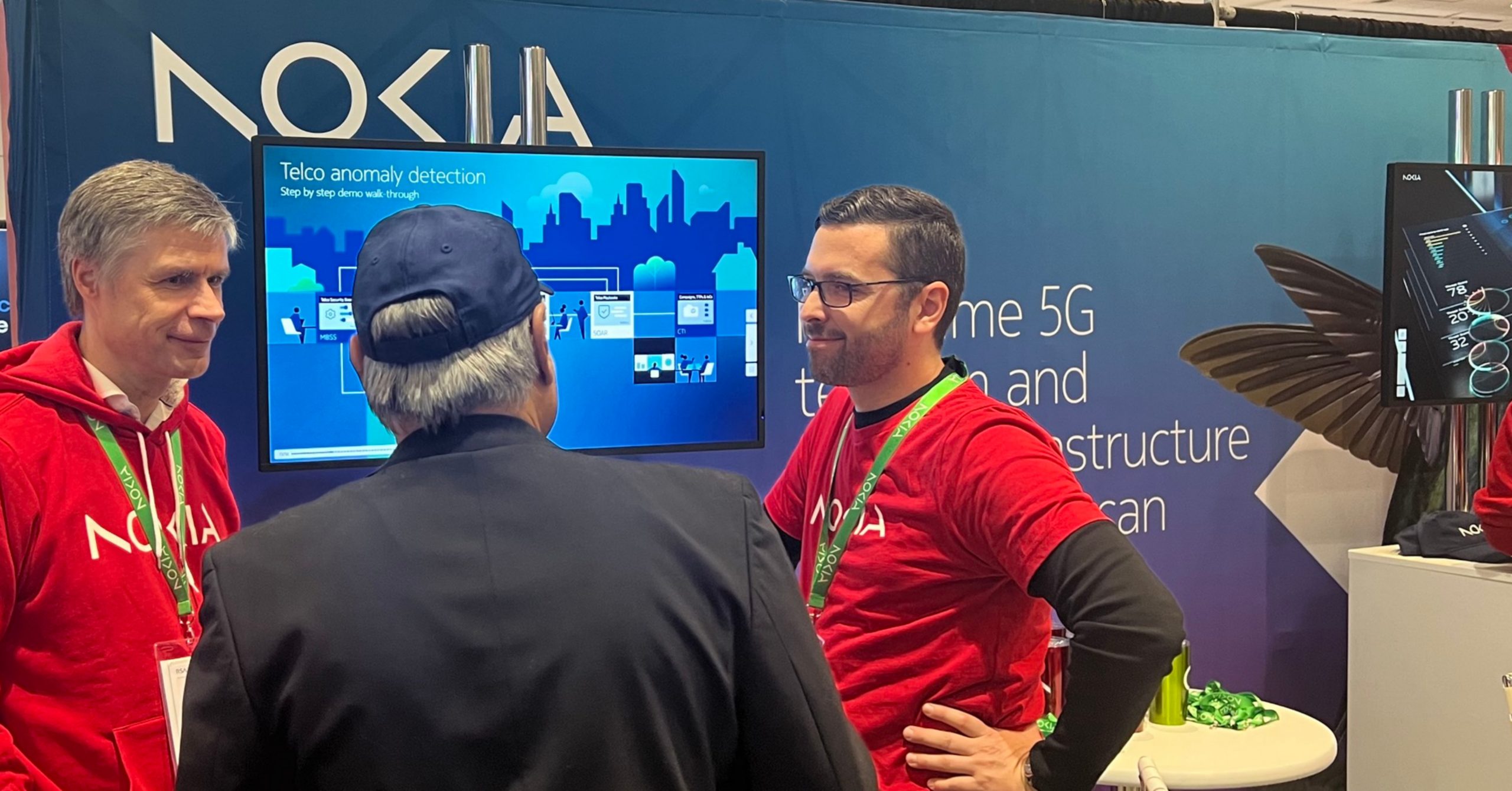
NEW DELHI: Nokia has announced the results of its new research report, the Nokia MEA Mobile Broadband Index, which provides a comprehensive overview of the MEA region’s mobile broadband landscape. The in-depth report highlights the steady growth of 5G in the Middle East and Africa region (MEA) as well as its impact on digital transformation.
It confirms that the Middle East is far ahead of Africa in terms of 5G adoption, while many operators in Africa are still developing their business models around 4G. Voice traffic still relies on 2G and 3G networks in many parts of the region.
5G is forecast to increase steadily and will contribute to the growth of the mobile broadband subscriber base, which is expected to grow with a CAGR of six percent in MEA. According to the report, 4G networks in MEA account for 79 percent of overall data traffic today, and by 2027, 4G and 5G will together account for 90 percent of data traffic. In the same year, 4G subscribers will reach 1,214 million (53 percent of total subscribers) whereas 5G adoption is estimated to reach 380 million subscribers (17 percent of total). Yearly ARPU is estimated to increase at USD$3.4 in 2027, and total data traffic is expected to increase at a CAGR of 32 percent from 2022 to 2027.
The report shows that in the Gulf Cooperation Council (GCC) region, 5G adoption is the fastest, and 5G subscribers are expected to reach 75 percent by 2027, mainly driven by Saudi Arabia. In non-GCC Middle Eastern countries and in Africa, 4G will continue to expand and remain dominant until 2027, while 5G deployment is at nascent stage today and poised to gain more and more momentum over the next years.
As the report confirms, 5G Fixed Wireless Access (FWA) in the GCC countries and 4G FWA in the rest of the MEA region are one of the most attractive use cases, with a significant opportunity for operators to drive incremental revenues. Furthermore, 5G networks are more energy efficient than previous radio network generations, helping operators reach their sustainability targets.
Mikko Lavanti, Head of Mobile Networks at Nokia MEA, said: “MEA is a diverse region with many countries at different stages of development and that is reflected in our report. Data consumption with high-speed networks is increasing exponentially across the MEA market in both urban and rural areas. Reliable 4G and 5G networks are critical for bridging the digital divide in the region, in addition to supporting data-intensive applications for communities and businesses. Nokia is helping both operators and enterprises unlock new opportunities with 5G, building the evolution towards future technologies that will enable enhanced experiences such as the Metaverse.”
5g
Airtel announces its largest ever 5G roll-out in 125 cities
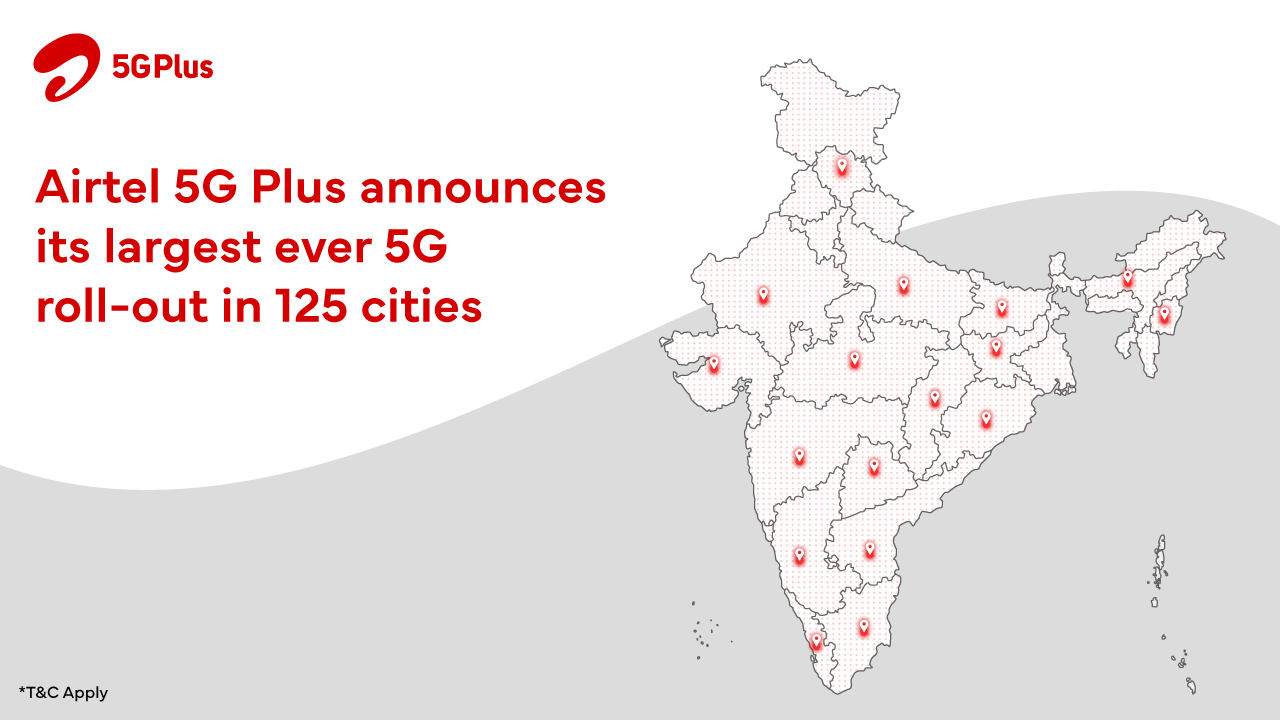
NEW DELHI: Bharti Airtel, India’s telecommunications services provider, today announced the launch of its ultra-fast 5G services in 125 cities. Airtel 5G Plus service is now available to customers in over 265 cities in the country.
Airtel 5G Plus has three compelling advantages for customers. First, it runs on a technology that has the widest acceptance in the world with the most developed ecosystem. This ensures that all 5G smartphones in India seamlessly work on the Airtel network. Second, the company promises to deliver the best experience – between 20 to 30 times higher speeds than today coupled with brilliant voice experience and super-fast call connect. Finally, Airtel 5G Plus network will also be kinder to the environment with its special power reduction solution. Powered by the reliable Airtel network infrastructure, Airtel 5G Plus will provide superfast access to High-Definition video streaming, gaming, multiple chatting, instant uploading of photos et all.
Commenting on the launch, Randeep Sekhon, CTO, Bharti Airtel said, “5G has revolutionized the world of internet, ushering new era of connectivity and communications that will prove to be a game-changer for the country. At Airtel, we remain committed to delivering the highest quality of network and service to our customers as we roll-out 125 more cities today. Airtel was the first in the country to offer 5G services in October 2022, and today’s mega launch is our promise to connect every Airtel customer in the country with ultra-fast Airtel 5G Plus. Our 5G rollout is on track to cover all towns and key rural areas by March 2024.”
Airtel 5G Plus service availability will continue to rapidly expand – including service in all towns and villages in the country soon – as the company is working towards offering nationwide coverage. Airtel is now offering its 5G services in every major city from the upper northern city of Jammu to the southern tip of Kanyakumari.
In the last one year, Airtel has demonstrated the power of 5G with a host of powerful use cases that will change the way customers lead their lives and do business. From India’s first live 5G network in Hyderabad to India’s first private 5G network at the BOSCH facility in Bengaluru to partnering with Mahindra & Mahindra to make its Chakan manufacturing facility, India’s first 5G enabled auto manufacturing unit, Airtel has been at the forefront of 5G innovation.



